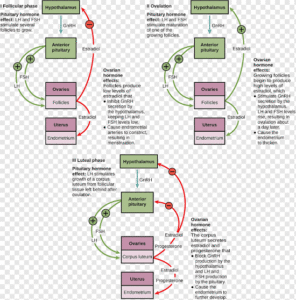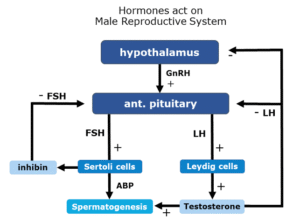Back to: ZOOLOGY 400 Level
Welcome to class!
Hello my amazing learner! It’s a joy to have you back again. You’ve been doing such a great job learning about the reproductive system, and today, we’re going to build on that with a topic that holds everything together — Hormonal Control of Reproduction. Think of hormones as invisible messengers that make sure everything in the reproductive system happens at the right time, in the right way.
Hormonal Control Of Reproduction
The reproductive system is like a well-coordinated orchestra, and the endocrine system is the conductor. Hormones from the brain and reproductive organs control the development of sexual characteristics, production of gametes (sperm and eggs), and the timing of reproductive cycles.
Key Hormones Involved in Reproduction:
Gonadotropin-Releasing Hormone (GnRH):

Produced by the hypothalamus, this hormone starts the entire reproductive process. It tells the pituitary gland to release two important hormones: FSH and LH.
Follicle-Stimulating Hormone (FSH):
In males, it stimulates the Sertoli cells in the testes to help sperm develop.
In females, it stimulates the growth of ovarian follicles, each containing an egg.
Luteinising Hormone (LH):
In males, it stimulates Leydig cells in the testes to produce testosterone.
In females, it triggers ovulation — the release of a mature egg — and helps form the corpus luteum, which produces hormones to support early pregnancy.
Testosterone:
Produced in the testes, testosterone is responsible for male characteristics (like deeper voice, facial hair), sperm production, and libido.
Oestrogen and Progesterone:
Produced in the ovaries:
Oestrogen thickens the uterine lining and supports follicle growth.
Progesterone maintains the uterine lining for possible pregnancy.
If pregnancy doesn’t happen, progesterone drops and the cycle restarts.
Feedback Mechanism:
The body maintains balance using negative feedback. For example, high levels of testosterone or oestrogen can signal the hypothalamus and pituitary to reduce GnRH, FSH, and LH production, preventing hormone overload.

Example: Imagine a water tank with a tap. When the tank is full, the float valve signals the tap to stop the water — that’s negative feedback in action. Similarly, hormones help the body know when to stop or continue certain reproductive processes.
Summary
- Hormones control every stage of reproduction in males and females.
- GnRH from the hypothalamus triggers the release of FSH and LH from the pituitary gland.
- FSH and LH regulate sperm production in males and ovulation in females.
- Testosterone, oestrogen, and progesterone develop sex characteristics and support reproduction.
- A feedback system maintains hormonal balance to avoid overproduction.
Evaluation
- What hormone starts the reproductive hormonal chain?
- What are the functions of FSH and LH in males and females?
- How do oestrogen and progesterone contribute to reproduction?
- Describe the role of testosterone in male reproduction.
- Explain what negative feedback means in hormonal control.
You’re doing a fantastic job! Every concept you understand takes you one step closer to becoming the brilliant scholar you were born to be. Keep shining, keep asking questions, and remember — with Afrilearn, your success is unstoppable. Keep going, you’re amazing!
